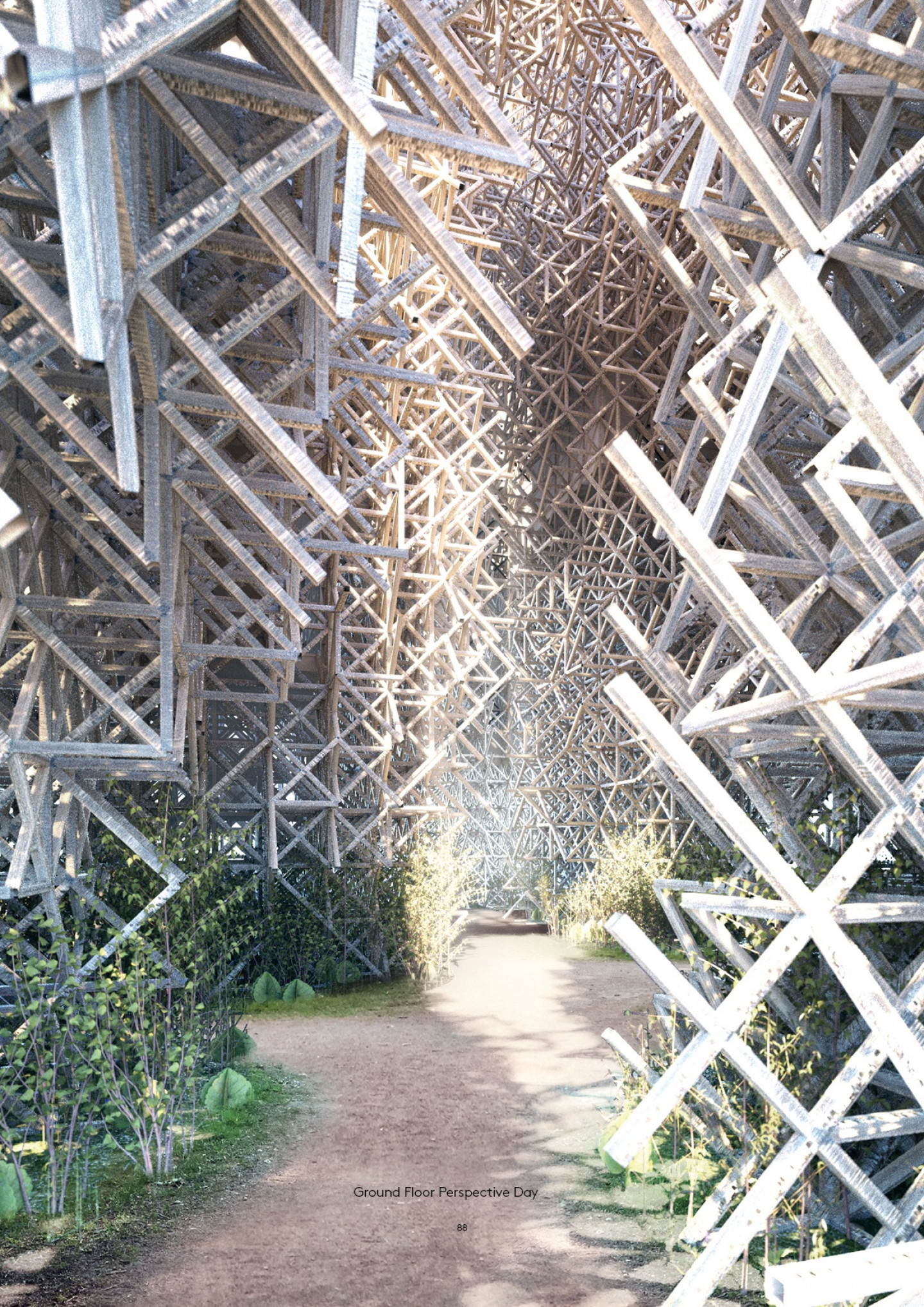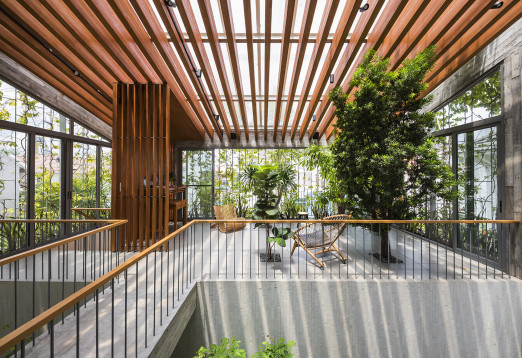Architect Jonathan Hellsten has proposed a housing complex in which the architecture is based on the structure and layering of trees within a forest.
His project called ‘Architecture of the Forest’ is designed to reflect the spatial and aesthetic qualities of a forest-like landscape with the aim of creating an urban space which exerts the same beneficial effects as walking in a forest.
Hellsten undertook his research in the Borås forest in Sweden, designing a housing strategy that could be placed in urban locations where green spaces are sparse, such as Dusseldorf or Milan. Architecture of the Forest is designed as a series of homes, creating living spaces which have similar structural characteristics to that of a woodland landscape.
In Borås, Hellsten focused upon the forest's structure; recording how trees overlap each other and how light seeps through the forest canopy. He registered the height of the trees, trunk sizes and tree crown dimensions, also geo-locating each tree so that he could later register the information using GIS-software. After this, Hellsten used his site survey results to develop the basis for his architectural drawings and diagrams.
The architectural volume of Hellsten’s complex corresponds to the radius of the forest tree canopy; the architecture is devised as a complex that blends different structure’s heights, leaving gaps in the housing complex, much like how trees leave spacial gaps in a forest.
The complex's rectangular structure follows a similar volume and fades throughout the edges of the forest. The lattice is designed to seamlessly blend through residencies, and some of the voids are extended all the way throughout the construction, letting light in through the ceiling.
Privacy between the complex's structure is kept even, creating a buffer layer between the neighbouring residences. Each home within the complex is arranged so occupants can climb their way through, similar to how animals climb from branch to branch. The outcome of Hellsten’s design is a range of buildings large enough to house a few hundred people, yet designed to recreate the similar light qualities and spacial voids as seen in a forest.
The inner housing volumes are constructed out of 6x6x700mm wooden sticks, and the final result is a rectangular grid, which fades towards the edges, similar to what a forest looks like at the borders of a tree crown. As research has proven that living closer to green spaces correlates with lengths of life, the development of architecture that subconsciously reminds the brain of walking within a natural setting could be a benefit to occupants.
To view more of Hellsten’s work, visit his website.

.jpg?1552400583)





